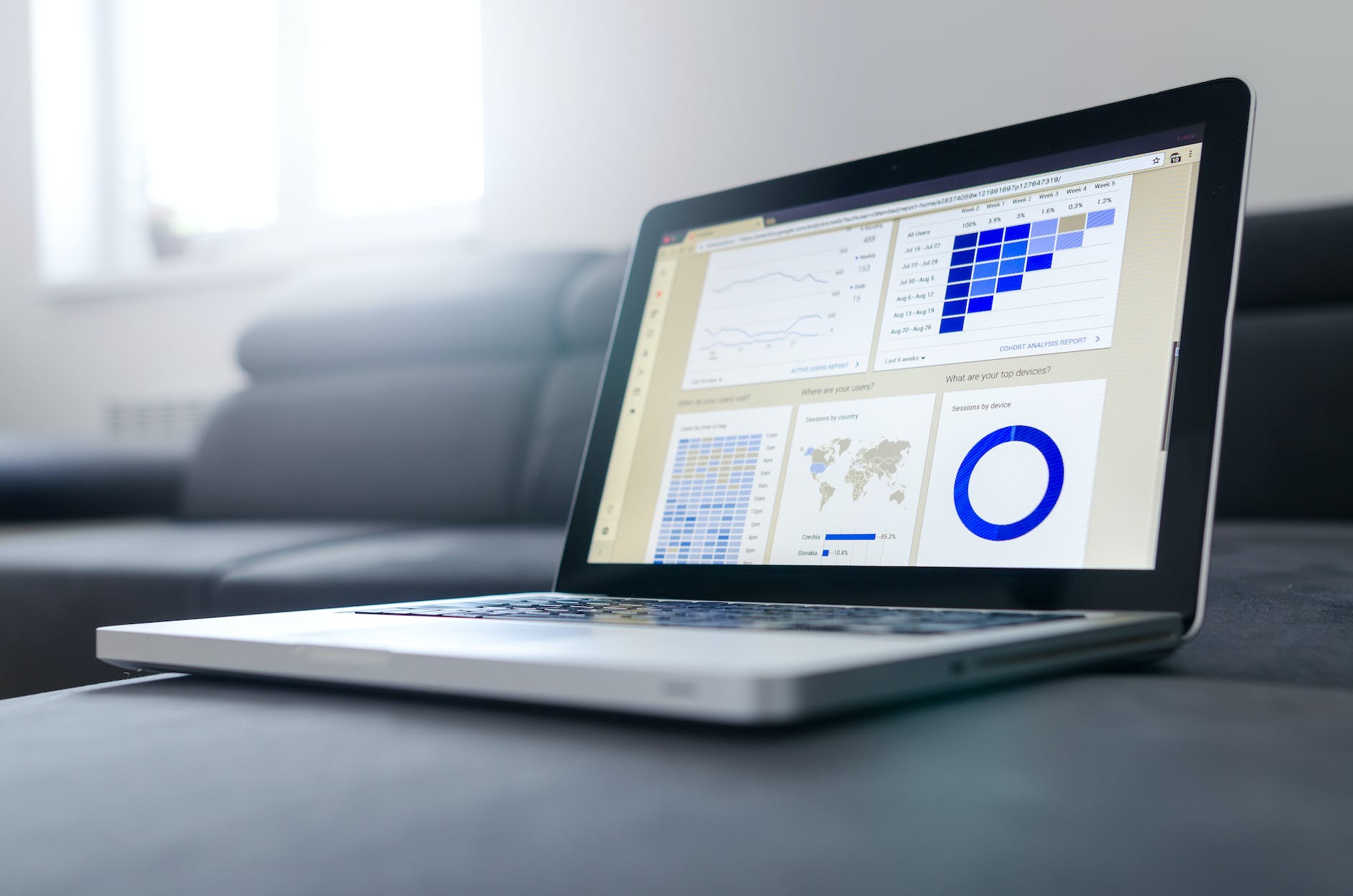Data visualisation is a powerful tool that enables businesses to unlock the full potential of their data. The ability to present complex data in a visually appealing and easily understandable manner is crucial for decision-making and driving business outcomes.
In this comprehensive guide, we will walk you through the four essential steps to run a successful data visualisation project. Let’s dive in.

Understanding the Importance of Data Visualisation
Data visualisation enables stakeholders to gain meaningful insights from vast amounts of data, making it easier to identify patterns, trends, and outliers. By visualising data, you can communicate complex information in a clear and concise manner, fostering better understanding and driving informed decision-making.
In today’s data-driven world, relying solely on numbers and spreadsheets can be overwhelming for an audience. By presenting data visually, you can tell a compelling story that resonates with your stakeholders and helps them grasp the key messages more effectively.
The Role of Data Visualisation in Business
Data visualisation is not just about presenting data in a visually appealing way; it goes beyond aesthetics. It serves as a powerful tool for businesses to uncover insights, detect patterns, and identify opportunities or challenges. Data visualisation enables stakeholders to gain a comprehensive understanding of complex data sets and make data-driven decisions.
Moreover, data visualisation facilitates effective communication among teams and stakeholders. It promotes transparency, collaboration, and a shared understanding of data, leading to enhanced decision-making processes.
Key Benefits of Effective Data Visualisation
Effective data visualisation offers several key benefits for organisations:
- Improves data comprehension: Visual representations make it easier for stakeholders to understand complex data sets quickly and draw meaningful insights.
- Enables better decision-making: Data visualisation allows stakeholders to identify patterns, trends, and outliers, facilitating informed decision-making.
- Enhances data storytelling: Visualising data helps to present information in a compelling narrative format, making it more memorable and persuasive.
- Fosters data-driven culture: By visualising data, organisations can promote a culture of data-driven decision-making, empowering employees to base their actions on accurate and relevant information.

Step 1: Defining Your Data Visualisation Goals
Before embarking on a data visualisation project, it’s crucial to define your goals clearly. This step lays the foundation for the entire project, ensuring that your visualisation aligns with your objectives and resonates with your audience.
Identifying Your Target Audience
Understanding your target audience is vital for creating effective data visualisations. Consider their level of expertise, their preferences, and the specific information they are seeking. By tailoring your visualisation to their needs, you can ensure it is relevant and impactful.
Establishing Clear Objectives
Clearly defined objectives are essential for guiding your data visualisation project. Ask yourself what key messages you want to convey and what insights you hope to uncover. Focusing on these objectives will help you stay on track throughout the project and ensure your visualisation delivers the desired outcomes.
Step 2: Gathering and Preparing Your Data
With clear goals in mind, it’s time to gather and prepare the data for visualisation. This step involves selecting relevant data sources and ensuring your data is clean and well-organised.
Choosing Relevant Data Sources
Identify the primary sources of data that align with your objectives. It could be internal databases, external reports, or user-generated data. Make sure the selected data sources provide comprehensive and reliable information to support your visualisation.
Cleaning and Organising Your Data
Prior to visualising your data, it’s essential to ensure its accuracy and consistency. Identify any missing or incorrect data points and address them. Organise your data in a structured manner, making it easier to work with and ensuring your visualisation is based on reliable information.

Step 3: Selecting the Right Visualisation Tools
Choosing the right tools for your data visualisation project is critical. It allows you to create visually appealing and interactive visualisations that effectively represent your data.
Overview of Popular Data Visualisation Tools
There is a wide range of data visualisation tools available, each offering unique features and functionalities. Research and explore popular tools like Tableau, D3.js, and Power BI to understand their capabilities and choose one that best suits your project requirements.
Matching Tools to Your Specific Needs
Consider the complexity of your data, your level of expertise, and the desired interactivity of your visualisation when selecting the appropriate tool. Look for tools that offer a user-friendly interface, comprehensive data integration capabilities, and options for customisation to meet your specific needs.
Step 4: Designing Your Data Visualisation
Designing an effective data visualisation involves a careful balance between aesthetics and functionality. It aims to present data in a visually compelling way while ensuring clarity and ease of understanding.
Principles of Effective Design
When designing your data visualisation, keep these principles in mind:
- Simplicity: Keep your design clean and uncluttered. Avoid information overload and focus on conveying the most important insights.
- Consistency: Use consistent colors, fonts, and visual elements throughout your visualisation to create a cohesive and professional look.
- Hierarchy: Organise your data in a logical hierarchy to guide the viewer’s attention. Highlight key insights and use visual cues to distinguish different data points.
Balancing Aesthetics and Functionality
While aesthetics are crucial for engaging the audience, don’t sacrifice functionality. Ensure that your visualisation remains clear, informative, and easy to navigate. Incorporate interactive elements where appropriate, enabling users to explore different aspects of the data.
Conclusion
By following these four steps, you can unlock the potential of your data and communicate insights that drive informed decision-making. Remember to keep the end-users in mind throughout the process, tailoring your visualisations to their needs and preferences. Embrace the power of data visualisation and unleash the hidden value in your data.
TRUECHART fundamentally changes data visualization and collaboration – powered by standardized IBCS® templates. It provides the speed and scale needed to tackle petabytes of business intelligence in interactive speed to make data management and complex reporting much easier, simpler, and faster. Book your TRUECHART demo today.
Stay up-to-date with TRUECHART. Follow us on LinkedIn.
